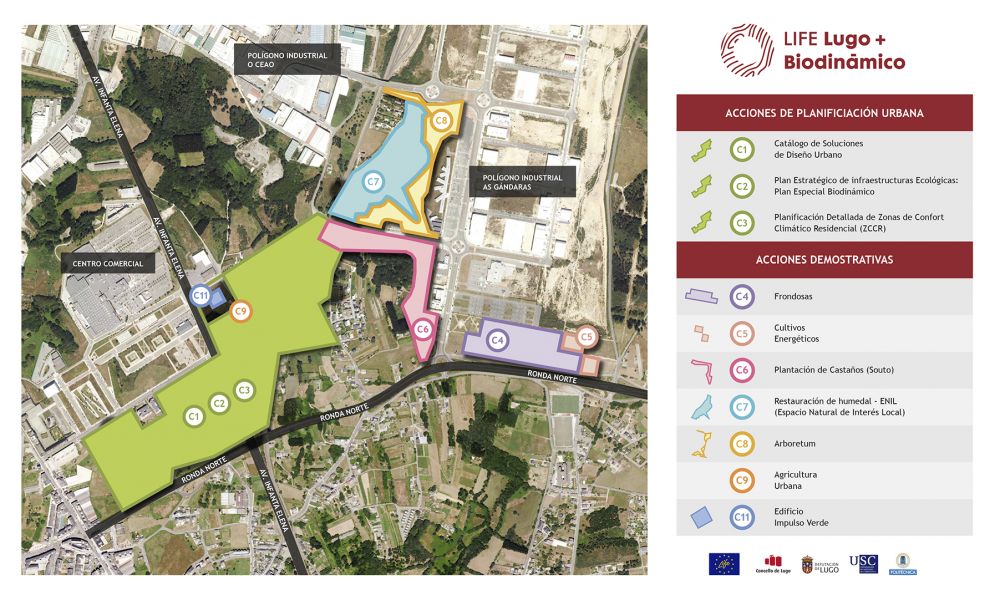OBJECT OF THE PROJECT
The LIFE Lugo + Biodinámico project wants to contribute to develop an urban planning strategy to achieve an effective adaptation to climate change at the neighborhood or residential neighborhood scale, visualizing it not as a threat but as an opportunity to improve the quality of urban spaces, considering climate change as a challenge, and the growing need for regeneration of urban environments as their context.
For this, it establishes a program of actions lasting four and a half years that includes a mosaic of 28 related actions, ranging from the knowledge of the reference climate scenario, the analytical framework and the strategic vision of the location, the catalog of urban design solutions, with the detail of the definition of the ecological infrastructures of the area and the detailed planning of residential climatic comfort zones, up to the forestry actions of autochthonous hardwoods, energy crops in the urban environment, trees, recovery and improvement of a wetland and creation of a Galician arboretum.
These actions are complemented with the establishment of urban agriculture soil and height, adaptation of building systems with native materials of low energy incorporated and with the design and implementation of a pilot project: a demonstration building entirely built with high technology of wood and that will be called “Impulso Verde” (Green Impulse).
The actions are completed with an adequate monitoring of the results at a physical, socio-economic and environmental level, with the evaluation of the impact of the project, with the communication and dissemination of the results and the possibility of transfer and replication of the experience. The objective is that the developed procedures can serve as a demonstrative example for its application in other municipalities and local entities of medium-sized cities (such as Lugo) so that they can offer new alternative ways of acting in the context of climate change and the consequences that they are derived from it for urban environments.
Therefore, the defined objective of the project is: “Put into practice in the city of Lugo an innovative urban planning strategy aimed at intermediate-scale actions in neighborhoods or residential areas to achieve resilient urban fabric and adapted to the consequences and effects of change climate“.








